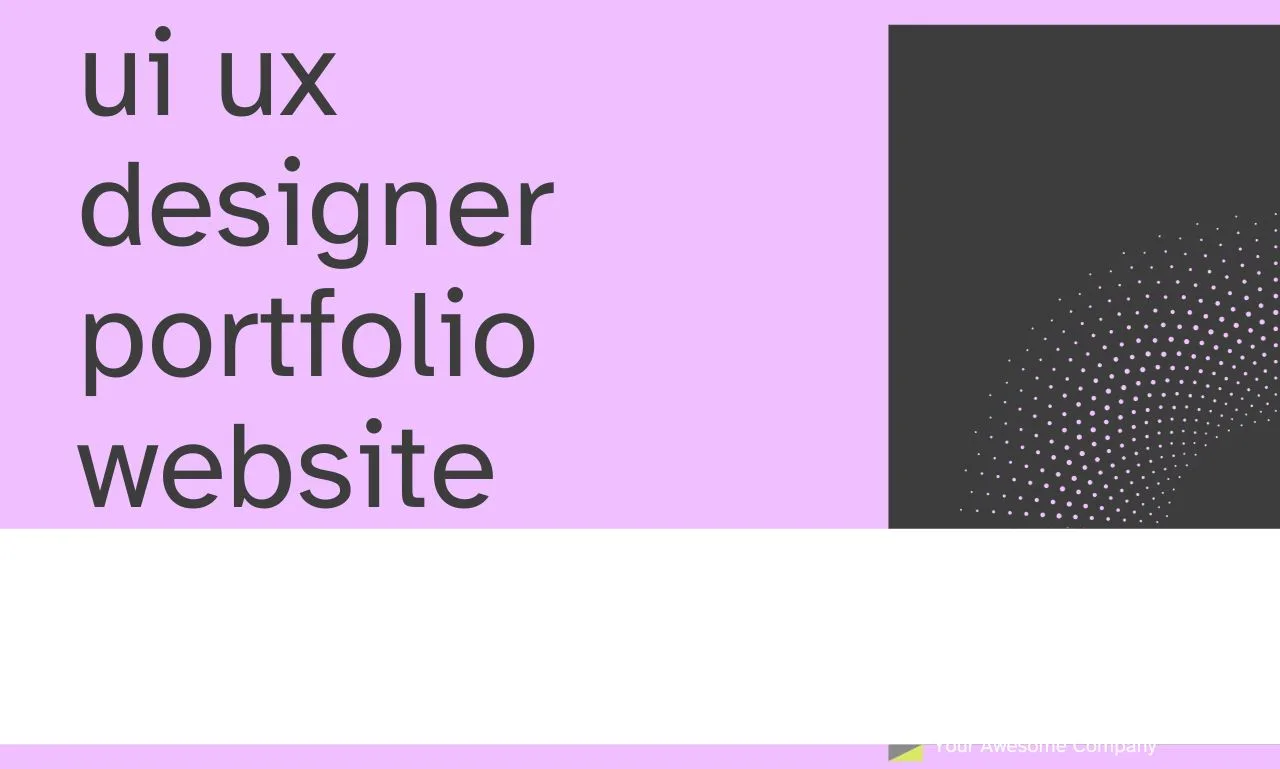ui ux designer portfolio website
Crafting the Ideal UI/UX Designer Portfolio Website
In today’s digital age, a well-designed online portfolio is an absolute necessity for UI/UX designers. Your portfolio website is not just a showcase of your work; it’s a reflection of your skills, creativity, and understanding of user experience. In this article, we’ll delve into the key elements that make up the perfect UI/UX designer portfolio website, ensuring you stand out in a competitive field.
The Significance of a Stunning UI/UX Designer Portfolio Website
Your portfolio website serves as your digital business card, making a strong first impression on potential clients and employers. It’s where you get to tell your unique story, showcase your skills, and demonstrate your ability to create user-friendly designs. Here are the essential elements that make a portfolio website truly outstanding:
1. Clean and Intuitive Design
Your website’s design should be a testament to your design skills. Keep it clean, visually appealing, and easy to navigate. Use a consistent color scheme, typography, and layout to create a cohesive and harmonious user experience.
2. Showcase Your Best Work
Select a carefully curated collection of your top projects to display on your portfolio. Highlight a diverse range of work that demonstrates your versatility and expertise in UI/UX design. Each project should tell a story of your problem-solving abilities and attention to detail.
3. Incorporate Case Studies
To provide deeper insights into your design process, include case studies for some of your projects. Explain the challenges you faced, your design decisions, and the impact of your work on the end users. Case studies give potential clients a glimpse into your problem-solving skills.
4. Client Testimonials
Include testimonials from satisfied clients or colleagues to build trust and credibility. Real-world feedback can be a powerful persuasion tool, convincing potential clients of your expertise and reliability.
5. Responsive Design
Ensure that your portfolio website is responsive and functions seamlessly on various devices, including smartphones and tablets. A mobile-friendly design is crucial, as many users access websites on their mobile devices.
6. Contact Information
Make it easy for visitors to get in touch with you. Provide clear and accessible contact information, such as an email address or contact form. You don’t want to miss out on potential opportunities because interested parties couldn’t reach you.
7. Blog or Insights Section
Demonstrate your passion and expertise by maintaining a blog or insights section on your website. Share your thoughts on UI/UX trends, design principles, and industry news. This not only showcases your knowledge but also helps with search engine optimization (SEO).
8. A Personal Touch
Don’t forget to inject your personality into your portfolio. Share a brief bio, a professional photo, and a glimpse into your interests and hobbies outside of design. People like to work with individuals they can connect with on a personal level.
The Power of SEO for Your Portfolio Website
Creating a stunning UI/UX designer portfolio website is just the first step. To ensure that your website reaches its intended audience, you need to harness the power of SEO. Here’s how you can optimize your website for search engines while maintaining an exceptional user experience:
1. Keyword Optimization
As a UI/UX designer, you understand the importance of keywords. Ensure that your portfolio website includes the term “UI/UX designer portfolio website” strategically in your content. However, do so naturally and avoid keyword stuffing, which can hurt your SEO efforts.
2. Quality Content
Create high-quality, informative content that caters to the needs and interests of your target audience. This can include blog posts on UI/UX design best practices, case studies, and industry insights. Quality content not only attracts visitors but also improves your website’s search engine rankings.
3. Metadata Optimization
Pay attention to meta titles and descriptions for each page on your website. These snippets provide a concise preview of your content to search engine users. Including relevant keywords in your metadata can boost your SEO efforts.
4. Mobile Optimization
Given the increasing use of mobile devices for web browsing, having a mobile-optimized website is critical. Google considers mobile-friendliness when ranking websites in search results.
5. Page Speed
A slow-loading website can deter visitors and negatively impact your SEO. Compress images, use efficient coding practices, and leverage browser caching to improve your website’s speed.
6. Backlinks
Earn high-quality backlinks from reputable websites in your industry. Backlinks are like upvotes from the internet community, signaling to search engines that your content is valuable and authoritative.
7. Regular Updates
Keep your portfolio website fresh by regularly updating your content and portfolio. Search engines tend to favor websites that provide up-to-date information.
Conclusion
A UI/UX designer portfolio website is your digital showcase to the world. It’s not just about aesthetics but also about functionality and discoverability. By combining stellar design with effective SEO strategies, you can create the perfect online platform to attract clients, employers, and opportunities in the ever-evolving field of UI/UX design. Start crafting your outstanding portfolio website today and watch your career soar.



